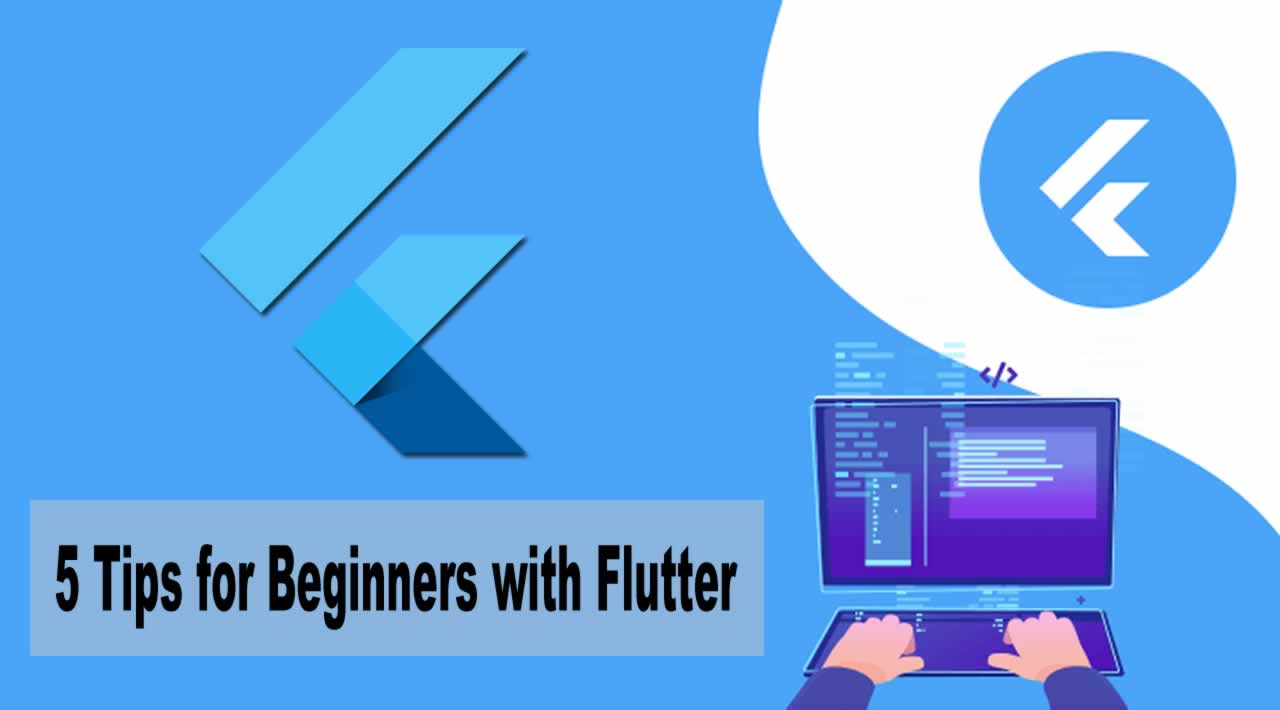5 Tips for Beginners with Flutter
Since the time that the iOS and Android platforms exploded onto the scene a decade ago, cross-platform development has been a goal across the mobile development world. The ability to write one app for both iOS and Android can save significant time and effort for your company and team.
There have been various tools released for cross-platform development over the years, including web-based tools such as PhoneGap from Adobe, powerful frameworks such as Xamarin from Microsoft, and newer tools such as React Native from Facebook. Each toolset has pros and cons and they have met with varying degrees of success in the mobile industry.
A more recent framework to enter the cross-platform arena is Flutter from Google. Flutter features fast development cycles, fast UI rendering, unique UI design, and native app performance on both platforms.
Flutter is an SDK that allows you to develop mobile apps for both iOS and Android using Dart code. Developing in Flutter is a pleasure, and leveraging it’s beautiful widgets allow you a very fast prototyping. Flutter converts your code into native code for both platforms, therefore you don’t need to work in those platforms if you don’t want to.
This tutorial is prepared for Beginners who are aspiring to make a career in the field of mobile applications. If you’re a beginner, we recommend checking out the tips in this article that are really helpful before you get started with Flutter.
Here are 5 tips for Flutter newbies.
1. Stick to Stateless Widgets for Now
StatelessWidget is the default class any Widget will extend in Flutter. As the name implies they are for rendering widgets that will not need to hold any state.
In terms of its counterpart, StatefullWidget’, Flutter’s documentation presents this by showing how to say, handle an event and change some information that’s on a screen. If you’re a newcomer to programming or even a junior developer, learning this at the beginning is by no means required. I say this because, at the beginning of learning anything, motivation is the key to keep going and your primary focus should be getting comfortable with rendering a nice looking screen with some content.
2. Keep It Simple When Getting Started With Widgets
Flutter heavily uses Material Design widgets in examples and throughout most of its library. If you want to quickly get a UI together or have no time to write an app for Android and iOS, stick to Material Design.
Yet the problem with Material Design is it may alienate your iOS users unless customized properly. Google has been recently making efforts to make its library more flexible and show how adaptable it is, encouraging developers to break out of boring, repetitive UIs that all just look like Google Docs.
Flutter does offer “Cupertino” iOS style widgets yet this comes at the cost of needing to do some heavy code splitting since these widgets require other parent widgets to work properly. Plus, Google isn’t heavily focused on offering a full-blown comprehensive set of iOS widgets,
3. Forget Learning Dart From Day One
Flutter uses Dart, a language that is very easy to pick up, even for folks new to software development. Yet getting an app running and rendering some simple UI does not at all require any Dart knowledge.
After you’re comfortable with learning the basics of layouts, getting some content on the screen, then take an entirely separate day to read up on Dart. After that, you’ll be ready to learn things like handling events (i.e. tapping a button) and maybe even fetching data from an API, depending on your experience level.
4. Establish Some “Motivation Milestones”
Again, when learning anything, hitting some important milestones is key to staying motivated. Here are some of my recommended learning milestones:
-
Milestone One: Be able to develop a screen with a simple layout, text, a non-working button, and an image.
-
Milestone Two: Be able to run your app on your actual phone. This is very cool and really motivating.
-
Milestone Three: Learn how to hook up a button, change some state and render it on the screen by using a StatefulWidget.
-
Milestone Four: Take a few hours to read up on Dart (this step can even come before the previous milestone if you’d like).
-
Milestone Five: Be able to fetch some data from a public API (examples) and render it on the screen. Understand how to work with JSON and deserializing it.
-
Milestone Six: Release an actual iOS and/or Android build to a friend. This will surprise you but I really believe in doing this early, unless you’re still evaluating to see if Flutter is right for you. Showing an app you wrote, even if it’s not at all useful, to friends and family and sending it out to a test user via iTunesConnect or the Google Play Store (easier) and doing this early on is the really an amazing way to stay motivated and confident that you can crank out an app to the public one day.
5. Learn How to Get Help
Get used to going to the Flutter Google Group if you can’t find an answer to a problem on Stack Overflow. I recommend the former over Stack Overflow when asking questions actually. You can read more advice here.
Try to find a few mentors that can help you as well. You’ll find the Flutter community is wonderfully engaged and passionate.
This article is the end, that’s all I caught during a time exploring Flutter. Hope this article will help you, if you find it useful, please share it with everyone.
Thanks for reading !
#flutter #app #mobile
